LG ARNU09GL4G4 Manuale utente
- Categoria
- Condizionatori d'aria a sistema split
- Tipo
- Manuale utente

Please read this manual carefully before operating
your set and retain it for future reference.
Ceiling Concealed Duct - Low Static
Original instruction
[
Representative
] LG Electronics Inc. EU Representative : LG Electronics European Shared
Service Center B.V. Krijgsman 1, 1186 DM Amstelveen, The Netherlands
[Manufacturer] LG Electronics Tianjin Appliances Co.,Ltd.
No.09, JinWei Road,Beichen District,Tianjin,300402.P.R.China
OWNER’S MANUAL
AIR
CONDITIONER
P/NO : MFL67088410
Rev.00_040219
www.lg.com
Copyright © 2019 LG Electronics Inc. All Rights Reserved.
РУССКИЙ ЯЗЫК
УКРАÏНСЬКА
ҚАЗАҚ ТІЛІ
БЕЛАРУСКАЯ МОВА
OʻZBEK TILI
ITALIANO ESPAÑOL
FRANÇAIS
DEUTSCH
ΕΛΛΗΝΙΚΆ
ČEŠTINA
N
E
D
E
RL
A
ND
S
POLSKI
LIMBA ROMÂNĂ
ENGLISH
ARNU05GL4G4 ARNU07GL4G4 ARNU09GL4G4 ARNU12GL5G4
ARNU15GL5G4 ARNU18GL5G4 ARNU21GL6G4 ARNU24GL6G4

2 Indoor Unit
Ceiling Concealed Duct – Low Static Type Indoor Unit Owner’s Manual
TABLE OF CONTENTS
FOR YOUR RECORDS
Write the model and serial numbers here:
Model #
Serial #
You can find them on a label on the side of each unit.
Dealer's Name
Date Purchased
Staple your receipt to this page in the event you need
to prove date of purchase or to issue warranty.
READ THIS MANUAL
Inside you will find many helpful hints on how to use
and maintain your air conditioner properly. Just a little
preventive care on your part can save you a great deal
of time and money over the life of your air conditioner.
You'll find many answers to common problems in the
chart of troubleshooting tips. If you review our chart of
Troubleshooting Tips first, you may not need to call
for service at all.
PRECAUTION
• Contact the authorized service technician for repair or
maintenance of this unit.
• Contact the installer for installation of this unit.
• The air conditioner is not intended for use by young
children or invalids without supervision.
• Young children should be supervised to ensure that
they do not play with the air conditioner.
• When the power cord is to be replaced, replacement
work shall be performed by authorized personnel only
using only genuine replacement parts.
• Installation work must be performed in accordance with
the National Electric Code by qualified and authorized
personnel only.
Safety Precautions.................3
Prior to Operation ..................8
Maintenance and Service ......9
Before you Call for
Service................................11

Safety Precautions
Owner’s Manual 3
ENGLISH
Safety Precautions
To prevent injury to the user or other people and property damage, the following instructions must be
followed.
Incorrect operation due to ignoring instruction will cause harm or damage. The seriousness is classified
by the following indications.
WARNING
CAUTION
This symbol indicates the possibility of death or serious injury.
This symbol indicates the possibility of injury or damage to properties only.
Meanings of symbols used in this manual are as shown below.
Be sure not to do.
Be sure to follow the instruction.
WARNING
Installation
• Do not use a defective or underrated circuit breaker. Use this appliance
on a dedicated circuit.
- There is risk of fire or electric shock.
• For electrical work, contact the dealer, seller, a qualified electrician, or an
Authorized Service Center.
- Do not disassemble or repair the product. There is risk of fire or electric
shock.
• Always ground the product.
- There is risk of fire or electric shock.
• Install the panel and the cover of control box securely.
- There is risk of fire or electric shock.
• Always install a dedicated circuit and breaker.
- Improper wiring or installation may cause fire or electric shock
• Use the correctly rated breaker or fuse.
- There is risk of fire or electric shock.
• Do not modify or extend the power cable.
- There is risk of fire or electric shock.
• Do not install, remove, or re-install the unit by yourself (customer).
- There is risk of fire, electric shock, explosion, or injury.
• Be cautious when unpacking and installing the product.
- Sharp edges could cause injury. Be especially careful of the case edges
and the fins on the condenser and evaporator.
The following symbols are displayed on indoor and outdoor units.
Read the precautions in this manual
carefully before operating the unit.
This appliance is filled with flammable
refrigerant (R32)
This symbol indicates that the Operation
Manual should be read carefully.
This symbol indicates that a service
personnel should be handling this
equipment with reference to the
Installation Manual.

Safety Precautions
4 Indoor Unit
• For installation, always contact the dealer or an Authorized Service
Center.
- There is risk of fire, electric shock, explosion, or injury.
• Do not install the product on a defective installation stand.
- It may cause injury, accident, or damage to the product.
• Be sure the installation area does not deteriorate with age.
- If the base collapses, the air conditioner could fall with it, causing
property damage, product failure, and personal injury.
• Do not turn on the breaker or power under condition that front panel,
cabinet, top cover, control box cover are removed or opened.
- Otherwise, it may cause fire, electric shock, explosion or death.
• Use a vacuum pump or Inert (nitrogen) gas when doing leakage test or air
purge. Do not compress air or Oxygen and Do not use Flammable gases.
Otherwise, it may cause fire or explosion.
- There is the risk of death, injury, fire or explosion.
• Do not let the air conditioner run for a long time when the humidity is very
high and a door or a window is left open.
- Moisture may condense and wet or damage furniture.
Operation
• Take care to ensure that power cable could not be pulled out or damaged
during operation.
- There is risk of fire or electric shock.
• Do not place anything on the power cable.
- There is risk of fire or electric shock.
• Do not plug or unplug the power supply plug during operation.
- There is risk of fire or electric shock.
• Do not touch(operate) the product with wet hands.
- There is risk of fire or electrical shock.
• Do not place a heater or other appliances near the power cable.
- There is risk of fire and electric shock.
• Do not allow water to run into electric parts.
- It may cause There is risk of fire, failure of the product, or electric shock.
• Do not store or use flammable gas or combustibles near the product.
- There is risk of fire or failure of product.
• Do not use the product in a tightly closed space for a long time.
- Oxygen deficiency could occur.
• The appliance shall be stored in a well-ventilated area where the room size
corresponds to the room area as specified for operation.
(for R32)
• Ducts connected to an appliance shall not contain an ignition
source.
(for R32)

Safety Precautions
Owner’s Manual 5
ENGLISH
• When flammable gas leaks, turn off the gas and open a window for
ventilation before turn the product on.
- Do not use the telephone or turn switches on or off. There is risk of
explosion or fire
• If strange sounds, or small or smoke comes from product. Turn the
breaker off or disconnect the power supply cable.
- There is risk of electric shock or fire.
• Stop operation and close the window in storm or hurricane.
If possible, remove the product from the window before the hurricane
arrives.
- There is risk of property damage, failure of product, or electric shock.
• Do not open the inlet grill of the product during operation.
(Do not touch the electrostatic filter, if the unit is so equipped.)
- There is risk of physical injury, electric shock, or product failure.
• When the product is soaked (flooded or submerged), contact an
Authorized Service Center.
- There is risk of fire or electric shock.
• Be cautious that water could not enter the product.
- There is risk of fire, electric shock, or product damage.
• Ventilate the product from time to time when operating it together with a
stove, etc.
- There is risk of fire or electric shock.
• Turn the main power off when cleaning or maintaining the product.
- There is risk of electric shock.
• When the product is not be used for a long time, disconnect the power
supply plug or turn off the breaker.
- There is risk of product damage or failure, or unintended operation.
• Take care to ensure that nobody could step on or fall onto the outdoor
unit.
- This could result in personal injury and product damage.

Safety Precautions
6 Indoor Unit
CAUTION
Installation
• Always check for gas (refrigerant) leakage after installation or repair of
product.
- Low refrigerant levels may cause failure of product.
• Install the drain hose to ensure that water is drained away properly.
- A bad connection may cause water leakage.
• Keep level even when installing the product.
- To avoid vibration or water leakage.
• Do not install the product where the noise or hot air from the outdoor unit
could damage the neighborhoods.
- It may cause a problem for your neighbors.
• Use two or more people to lift and transport the product.
- Avoid personal injury.
• Do not install the product where it will be exposed to sea wind (salt spray)
directly.
- It may cause corrosion on the product. Corrosion, particularly on the
condenser and evaporator fins, could cause product malfunction or
inefficient operation.
Operation
• Do not expose the skin directly to cool air for long periods of time. (Don't
sit in the draft.)
- This could harm to your health.
• Do not use the product for special purposes, such as preserving foods,
works of art, etc. It is a consumer air conditioner, not a precision
refrigeration system.
- There is risk of damage or loss of property.
• Do not block the inlet or outlet of air flow.
- It may cause product failure.
• Use a soft cloth to clean. Do not use harsh detergents, solvents, etc.
- There is risk of fire, electric shock, or damage to the plastic parts of the
product.
• Do not touch the metal parts of the product when removing the air filter.
They are very sharp!
- There is risk of personal injury.
• Any person who is involved with working on or breaking into a refrigerant
circuit should hold a current valid certificate from an industry-accredited
assessment authority, which authorises their competence to handle refri-
gerants safely in accordance with an industry recognised assessment
specification.(for R32)

Safety Precautions
Owner’s Manual 7
ENGLISH
• Do not step on or put anyting on the product. (outdoor units)
- There is risk of personal injury and failure of product.
• Always insert the filter securely. Clean the filter every two weeks or more
often if necessary.
- A dirty filter reduces the efficiency of the air conditioner and could cause
product malfunction or damage.
• Do not insert hands or other objects through the air inlet or outlet while the
product is operated.
- There are sharp and moving parts that could cause personal injury.
• Do not drink the water drained from the product.
- It is not sanitary and could cause serious health issues.
• Use a firm stool or ladder when cleaning or maintaining the product.
- Be careful and Air-Filter avoid personal injury.
• Replace the all batteries in the remote control with new ones of the same
type. Do not mix old and new batteries or different types of batteries.
- There is risk of fire or explosion
• Do not recharge or disassemble the batteries. Do not dispose of batteries
in a fire.
- They may burn or explode.
• If the liquid from the batteries gets onto your skin or clothes, wash it well
with clean water. Do not use the remote if the batteries have leaked.
- The chemicals in batteries could cause burns or other health hazards.
• If you eat the liquid from the batteries, brush your teeth and see doctor.
Do not use the remote if the batteries have leaked.
- The chemicals in batteries could cause burns or other health hazards.
• Servicing shall only be performed as recommended by the equipment
manufacturer. Maintenance and repair requiring the assistance of other
skilled personnel shall be carried out under the supervision of the person
competent in the use of flammable refrigerants.(for R32)

Prior to operation
8 Indoor Unit
Prior to Operation
1. Contact an installation specialist for installation.
2. Use a dedicated circuit.
1. Being exposed to direct airflow for an extended period of time could be hazardous to your health.
Do not expose occupants, pets, or plants to direct airflow for extended periods of time.
2. Due to the possibility of oxygen deficiency, ventilate the room when used together with stoves or
other heating devices.
3. Do not use this air conditioner for non-specified special purposes (e.g. preserving precision
devices, food, pets, plants, and art objects). Such usage could damage the items.
4.While using the remote control, refer the user manual of that particular remote controller.
1. Do not touch the metal parts of the unit when removing the filter. Injuries can occur when handling
sharp metal edges.
2. Do not use water to clean inside the air conditioner. Exposure to water can destroy the insulation,
leading to possible electric shock.
3. When cleaning the unit, first make sure that the power and breaker are turned off. The fan rotates
at a very high speed during operation. There is a possibility of injury if the unit’s power is
accidentally triggered on while cleaning inner parts of the unit.
For repair and maintenance, contact your authorized service dealer.
Preparing for operation
Usage
Cleaning and maintenance
Service

Owner’s Manual 9
Maintenance and Service
B
e
n
z
e
n
e
S
C
O
U
R
I
N
C
L
B
A
R
G
E
S
I
N
N
E
R
Grille, Case, and Remote Control
Turn the system off before cleaning. To clean, wipe with
a soft, dry cloth. Do not use bleach or abrasives.
Supply power must be disconnected before
cleaning the indoor unit.
NOTICE
Never use any of the followings:
• Water hotter than 40°C
Could cause deformation and/or
discoloration.
• Volatile substances
Could damage the surfaces of the air
conditioner.
1. Clean the filter with a vacuum or warm, soapy
water.
• If very dirty, wash with a solution of
detergent in lukewarm water.
• If hot water (50°C or more) is used,
filter may be deformed.
2. After washing with water, dry well in the
shade.
3. Re-install the air filter.
Air Filter
The air filters behind Indoor unit
(the suction side) should be checked and cleaned once
every 2 weeks or more often if necessary.
CAUTION: Before performing any maintenance, turn off the main power to
the system.
ENGLISH
Maintenance and Service

CAUTION
CAUTION
Maintenance and Service
10 Indoor Unit
When the air conditioner is not going to be used for a long time.
Operation Tips
Helpful information
The air filters and your electiric bill.
If the air filters become clogged with dust, the
cooling capacity will drop, and 6% of the electricity
used to operate the air conditioner will be wasted.
When it is not going to be used for
a long time.
When the air conditioner is to
be used again.
Operate the air conditioner on Air
circulation mode for 2 to 3 hours.
• This will dry out the internal parts.
Turn off the circuit breaker.
Turn off the circuit breaker when the air conditioner
is not going to be used for a long time.
Dirt may collect and may cause a fire.
I
Check that the air inlet and outlet of the
indoor/outdoor unit are not blocked.
Do not overcool the room.
This is not good for the health
and wastes electricity.
Keep blinds or curtains
closed.
Do not let direct sunshine
enter the room when the air
conditioner is in operation.
Make sure that the doors
and windows are shut tight.
Avoid opening doors and
windows as much as possible
to keep the cool air in the
room.
Clean the air filter regularly.
Blockages in the air filter
reduce the airflow and lower
cooling and dehumidifying
effects. Clean at least once
every two weeks.
Ventilate the room
occasionally.
Since windows are kept
closed, it is a good idea to
open them and ventilate the
room now and then.

Owner’s Manual 11
Maintenance and Service
ENGLISH
Before you call for service...
?
Check the following points before requesting repairs or service.... If the malfunction persists,
please contact your dealer.
Troubleshooting Tips! Save time and money!
• Have you made a
mistake in timer
operation?
• Has the fuse blown
or has the circuit
breaker been
tripped?
• Check that this is not
a damp smell exuded
by the walls, carpet,
furniture or cloth
items in the room.
• Condensation occurs
when the airflow from
the air conditioner
cools the warm room
air.
• This is the protector
of the mechanism.
• Wait about three
minutes and
operation will begin.
The air conditioner
does not operate.
The room has a
peculiar odor.
It seems that
condensation is
leaking from the air
conditioner.
Air conditioner does
not operate for about
3 minutes when
restart.
Does not cool or heat
effectively.
The air conditioner
operation is noisy.
Crack sound is
heard.
Remote control
display is faint, or no
display at all.
• Is the air filter dirty?
See air filter cleaning
instructions.
• The room may have
been very hot when
the room air
conditioner was first
turned on. Allow time
for it to cool down.
• Has the temperature
been set incorrectly?
• Are the indoor unit's
air inlet or outlet vents
obstructed?
• For a noise that
sounds like water
flowing.
-This is the sound of
freon flowing inside
the air conditioner
unit.
• For a noise that
sounds like the
compressed air
releasing into
atmosphere.
-This is the sound of
the dehumidifying
water being
processed inside the
air conditioning unit.
• This sound is
generated by the
expansion/ constriction
of the front panel, etc.
due to changes of
temperature.
• Cleaning the filter,
press the Timer
button and ◀ button
of wired remote
controller at the same
time for 3 s
• Are the batteries
depleted?
• Are the batteries
inserted in the
opposite (+) and (-)
directions?
WATER RESISTANT: The outdoor side of this appliance is WATER RESISTANT.
The indoor side is not water resistant and should not be exposed to
excess water.
NOTICE
Filter sign lamp
(LED) is ON.

12 Indoor Unit

ITALIANO
MANUALE DI ISTRUZIONI
Leggere con attenzione questo manuale prima di usare l’unità e
conservare per uso futuro.
Condotto nascosto a soffitto - Basso Statico
Traduzione delle istruzioni originali
CLIMATIZZATORE
www.lg.com
Copyright © 2019 LG Electronics Inc. All Rights Reserved.

Ceiling Concealed Duct-Low Static Type Manuele di Istruzioni
SOMMARIO
2 Unità Interna
DATI DA RICORDARE
Annotare qui il numero di serie e il modello:
N°. modello
N°. di serie
I numeri sono riportati sull'etichetta a lato di ogni unità.
Nome del rivenditore
Data di acquisto
Spillare la ricevuta su questa pagina qualora fosse
necessaria per provare la data di acquisto o per motivi di
garanzia.
LEGGERE IL MANUALE
All’interno troverà molti suggerimenti utili sull’uso e la
manutenzione del condizionatore. Un minimo di attenzio-
ne può far risparmiare molto tempo e denaro nel corso
della vita del condizionatore.
Nella tabella di riferimento per la risoluzione dei problemi
troverà molte risposte ai problemi più comuni. Consultan-
do la tabella Risoluzione dei problemi potrebbe non
essere necessario contattare il servizio di assistenza.
AVVERTENZE
• Contattare un tecnico dell'assistenza autorizzato per la
riparazione o la manutenzione dell’unità.
• Contattare l’installatore per eseguire l’installazione
dell’unità.
• Il condizionatore non è stato progettato per essere uti-
lizzato da bambini o invalidi senza supervisione.
• È consigliabile vigilare sui bambini affinché essi non
giochino con il condizionatore.
• Se il cavo di alimentazione deve essere sostituito, il
servizio di sostituzione deve essere eseguito solo da
personale autorizzato utilizzando parti di ricambio ori-
ginali.
• Il servizio di installazione deve essere eseguito in
conformità con gli standard elettrici nazionali d esclu-
sivamente da personale autorizzato.
Precauzioni di sicurezza .........3
Prima di iniziare .......................8
Manutenzione e assistenza ....9
Prima di chiamare l'assisten-
za
........................................11

Precauzioni di sicurezza
Manuale di Istruzioni 3
ITALIANO
Per evitare infortuni dell'utente o altre persone e danni alle cose, attenersi alle seguenti istru-
zioni.
L’uso errato causato dalla mancata osservanza delle istruzioni può causare danni o lesioni.
L’importanza è classificata dalle seguenti indicazioni.
Il significato dei simboli utilizzati in questo manuale è spiegato di seguito.
ATTENZIONE
AVVISO
Questo simbolo indica la possibilità di decesso o di grave infortunio.
Questo simbolo indica la possibilità di infortunio o danni alle cose.
Azione/operazione da non fare.
Attenersi alle istruzioni.
Precauzioni di sicurezza
ATTENZIONE
Installazione
• Non utilizzare interruttori automatici difettosi o di potenza inferiore.
Utilizzare questa apparecchiatura su un circuito dedicato.
- Vi è il rischio di scosse elettriche o incendio.
• Per i collegamenti elettrici, rivolgersi al rivenditore, a un elettricista
qualificato o a un centro di assistenza autorizzato.
- Non smontare o tentare di riparare il prodotto. Vi è il rischio di scosse
elettriche o incendio.
• Il prodotto deve essere sempre provvisto di messa a terra.
- Vi è il rischio di scosse elettriche o incendio.
• Installare il pannello e il coperchio della scatola di controllo in modo
sicuro.
- Vi è il rischio di scosse elettriche o incendio.
• Installare sempre un interruttore automatico e circuito dedicato.
- L'errato cablaggio o installazione può causare incendi o scosse
elettriche.
• Utilizzare fusibili o interruttori automatici di giusta tensione.
- Vi e il rischio di scosse elettriche o incendio.
• Non modificare o prolungare il cavo di alimentazione.
- Vi è il rischio di scosse elettriche o incendio.
I seguenti simboli possono essere visualizzati sulle unità interna ed esterna.
Leggere attentamente le precauzioni
contenute nel presente manuale
prima di avviare il funzionamento
dell'apparecchio.
Questo apparecchio è stato riempito
con R32.
Questo simbolo indica che il
Manuale di istruzioni dovrebbe
essere letto con attenzione.
Questo simbolo indica che un tecnico
specializzato dovrebbe gestire
quest'attrezzatura facendo riferimento
al Manuale di installazione.

Precauzioni di sicurezza
4 Unità Interna
• L'unità non deve essere installata né rimossa dall'utente (cliente).
- Vi è il rischio di scosse elettriche, incendio, esplosione o lesioni.
• Disimballare e installare il prodotto con attenzione.
- I bordi taglienti possono causare infortuni. Fare particolare attenzione ai
bordi del contenitore e alle alette del condensatore e dell'evaporatore.
• Per l'installazione, rivolgersi sempre al rivenditore o a un centro di
assistenza autorizzato.
- Vi è il rischio di scosse elettriche, incendio, esplosione o lesioni.
• Non installare il prodotto su supporti di installazione difettosi.
- Ciò potrebbe causare infortuni, incidenti o danni al prodotto.
• Accertarsi che l'area di installazione non sia soggetta a deterioramento
nel tempo.
- Se la base si rompe, l'unità può cadere con essa, causando infortuni a
persone, guasti al prodotto o danni alle cose.
• Non attivare il sezionatore o l’alimentazione elettrica nei casi in cui il
pannello anteriore, l’armadio, il coperchio superiore, il coperchio della
scatola dei comandi siano rimossi o aperti.
- In caso contrario esiste il rischio di incendio, shock elettrico, esplosione
o morte.
• Usare una pompa a vuoto o gas inerte (azoto) quando si esegue il test di
perdita o lo spurgo di aria. Non comprimere l’aria o l’ossigeno e non usare
gas infiammabili. Altrimenti questa azione può provocare incendio o
esplosione.
- Esiste il rischio di morte, ferimento, incendio o esplosione.
• Non utilizzare il prodotto troppo a lungo in ambienti molto umidi e con una
finestra o una porta aperta.
- L'umidità potrebbe condensarsi e bagnare o danneggiare i mobili.
Funzionamento
• Avere cura di non tirare o danneggiare il cavo di alimentazione durante il
funzionamento.
- Vi è il rischio di scosse elettriche o incendio.
• Non mettere nulla sul cavo di alimentazione.
- Vi è il rischio di scosse elettriche o incendio.
• Non collegare/scollegare il cavo di alimentazione alla/dalla presa durante
il funzionamento.
- Vi è il rischio di scosse elettriche o incendio.
• Non toccare il prodotto con le mani bagnate.
- Vi è il rischio di scosse elettriche o incendio.
• L'apparecchio deve essere custodito in una stanza ben ventilata,nella quale
ci sia lo spazio necessario così come specificato per le operazioni. (per R32)
• I condotti collegati a un elettrodomestico non conterranno una fonte di
innesco. (per R32)

Precauzioni di sicurezza
Manuale di Istruzioni 5
ITALIANO
• Non posizionare riscaldatori o altre apparecchiature vicino al cavo di
alimentazione.
- Vi è il rischio di scosse elettriche e incendio.
• Non far cadere acqua sui componenti elettrici.
- Vi è il rischio di scosse elettriche, incendio o guasti al prodotto.
• Non conservare o utilizzare gas infiammabili o combustibili in prossimità
del prodotto.
- Vi è il rischio di incendio o guasti al prodotto.
• Non utilizzare il prodotto in luoghi chiusi per periodi prolungati.
- Potrebbe esservi una scarsità di ossigeno.
• In caso di perdite di gas infiammabile, aprire la finestra per ventilare il
locale prima di azionare l'unità.
- Non utilizzare il telefono o accendere o spegnere interruttori. Vi è il
rischio di esplosioni o incendi.
• In caso di rumori, odori o fumo anomali provenienti dal prodotto.
Spegnere l'interruttore automatico e scollegare il cavo di alimentazione.
- Vi è il rischio di scosse elettriche o incendio.
• Arrestare il funzionamento e chiudere la finestra in caso di tempeste o
uragani. Se possibile, rimuovere il prodotto dalla finestra prima che arrivi
un uragano.
- Vi è il rischio di danni alle cose, guasti al prodotto o scosse elettriche.
• Non aprire la griglia di aspirazione del prodotto durante il funzionamento
(non toccare il filtro elettrostatico, se presente).
- Vi è il rischio di lesioni fisiche, scosse elettriche o guasti al prodotto.
• In caso di allagamento del prodotto, rivolgersi a un centro di assistenza
autorizzato
- Vi è il rischio di scosse elettriche o incendio.
• Evitare che nel prodotto entri acqua.
- Vi è il rischio di scosse elettriche, incendio o danni al prodotto.
• Di tanto in tanto, ventilare il prodotto quando utilizzato insieme a fornelli
ecc.
- Vi è il rischio di scosse elettriche o incendio.
• Spegnere l'alimentazione prima di pulire o riparare il prodotto.
- Vi è il rischio di scosse elettriche.
• In caso di inutilizzo del prodotto per lunghi periodi, scollegare il cavo di
alimentazione e spegnere l'interruttore automatico.
- Vi è il rischio di guasti al prodotto o attivazione accidentale.
• Evitare che l'unità esterna sia calpestata da qualcuno.
- Ciò potrebbe lesioni personali e danni al prodotto.

Precauzioni di sicurezza
6 Unità Interna
AVVISO
Installazione
• Dopo l'installazione o la riparazione del prodotto, verificare sempre che
non vi siano perdite di gas (refrigerante).
- Livelli bassi di refrigerante potrebbero causare guasti al prodotto.
• Installare il tubo flessibile di scarico in modo da garantire uno scarico
corretto e sicuro.
- Un errato collegamento può causare perdite d'acqua.
• Installare il prodotto allineandolo in modo uniforme.
- Per evitare perdite d'acqua.
• Non installare il prodotto in modo che il rumore o l'aria calda provenienti
dall'unità esterna possano causare danni ai vicini.
- Ciò potrebbe causare problemi con i vicini.
• Per sollevare e trasportare il prodotto sono consigliabili due persone.
- Evitare lesioni personali.
• Non installare il prodotto in luoghi esposti direttamente al vento di mare
(spruzzi di sale).
- Ciò potrebbe causare corrosioni al prodotto. La corrosione, in particolare
sul condensatore e sulle alette dell'evaporatore, può causare
malfunzionamenti o inefficienza.
Funzionamento
• Non esporre la pelle direttamente all'aria fresca per periodi prolungati
(non sedersi nel raggio d'azione dell'aspirazione).
- Ciò potrebbe causare danni alla salute.
• Non utilizzare il prodotto per scopi specifici, ad esempio per conservare
alimenti, animali, opere d'arte ecc. Questo prodotto è un condizionatore
d'aria, non un sistema di refrigerazione.
- Vi ò il rischio di danni o perdita di cose.
• Non bloccare l'ingresso o l'uscita del flusso d'aria.
- In caso contrario, si potrebbero verificare guasti al prodotto.
• Utilizzare un panno soffice per la pulizia. Non utilizzare detergenti
aggressivi, solventi ecc.
- Vi è il rischio di scosse elettriche, incendio o danno alle parti in plastica
del prodotto.
• Non toccare le parti metalliche del prodotto durante la rimozione del filtro
dell'aria. Sono molto appuntite!
• Chiunque si trovi a lavorare o a intervenire su un circuito refrigerante deve
necessariamente essere in possesso di una certificazione in corso di validità
emessa dall'autorità competente del settore, con il quale viene autorizzato
a maneggiare i refrigeranti in condizioni di sicurezza, in conformità alle norme
specifiche del settore. (per R32)

Precauzioni di sicurezza
Manuale di Istruzioni 7
ITALIANO
- Vi è il rischio di lesioni personali.
• Non calpestare o mettere oggetti sul prodotto (unità esterne).
- Vi è il rischio di lesioni personali o guasti al prodotto.
• Inserire sempre il filtro in modo stabile. Pulire il filtro ogni 2 settimane o
più spesso, se necessario.
- Un filtro sporco riduce l'efficienza del condizionatore e potrebbe causare
danni o malfunzionamenti del prodotto.
• Non introdurre le mani o altri oggetti nella bocca di ingresso o uscita
dell'aria durante il funzionamento.
- Le parti mobili metalliche sono affilate e potrebbero causare infortuni.
• Non bere acqua fuoriuscita dal prodotto.
- Ciò può causare gravi danni alla salute.
• Utilizzare una scala salda per pulire o riparare il prodotto.
- Fare attenzione ed evitare lesioni personali.
• Sostituire tutte le batterie del telecomando sempre con altre dello stesso
tipo. Non mischiare batterie nuove e vecchie o batterie di tipo diverso.
- Vi è il rischio di esplosioni o incendi.
• Non ricaricare o smontare le batterie. Non gettare le batterie nel fuoco.
- Potrebbero bruciare o esplodere.
• In caso di caduta del liquido delle batterie sulla pelle o sugli indumenti,
lavare accuratamente con acqua pulita. Non utilizzare il telecomando se
le batterie presentano delle perdite.
- Le sostanze chimiche delle batterie potrebbero causare scottature o altri
pericoli.
• In caso di ingestione di liquido della batteria, lavarsi i denti e consultare
subito un medico. In caso di perdita dalle batterie, non utilizzare il
telecomando.
- Le sostanze chimiche contenute nelle batterie potrebbero causare
scottature o altri pericoli per la salute.
• Le operazioni di manutenzione devono essere fatte esclusivamente segu-
endo le indicazioni del produttore delle attrezzature. La manutenzione e la
riparazione che richiedono l'assistenza di personale tecnico abilitato devono
avvenire sotto la supervisione di personale competente nell'uso di refrigeranti
infiammabili. (per R32)

Prima di iniziare
8 Unità Interna
Prima di iniziare
1. Per l’installazione rivolgersi a un tecnico specializzato.
2. Utilizzare un circuito dedicato.
1. L’esposizione al flusso diretto dell’aria per un periodo prolungato di tempo può essere pericoloso
per la salute.
Non esporre le persone, gli animali o le piante al flusso d'aria per periodi di tempo prolungati.
2. A causa di una possibile carenza di ossigeno, ventilare la stanza quando viene usato insieme a
stufe o altri dispositivi di riscaldamento.
3. Non usare questo condizionatore d’aria per scopi speciali non specificati (es. per conservare stru-
menti di precisione, cibo, animali, piante o oggetti d’arte.) Questo tipo di uso può rovinare questo
tipo di oggetti.
4. Quando utilizzando il telecomando, consultare il manuale d'uso di quel determinato controller
remoto.
1. Quando si rimuove il filtro non toccare mai gli elementi metallici dell’unità. Si possono procurare
lesioni quando si maneggiano i bordi affilati di metallo.
2. Non pulire l’interno del condizionatore d’aria con acqua. L’esposizione all’acqua può rovinare l’iso-
lamento e provocare di conseguenza scosse elettriche.
3. Durante la pulizia del prodotto assicurarsi che l’interruttore automatico e l’alimentazione siano
disattivati. Durante il funzionamento la ventola gira a velocità elevata. Esiste la possibilità di pro-
vocare lesioni se l’unità viene accidentalmente accesa mentre si puliscono i componenti interni
dell’apparecchio.
Per le riparazioni e la manutenzione rivolgersi al proprio rivenditore autorizzato.
Preparazione all’uso
USO
Pulizia e manutenzione
Assistenza
La pagina si sta caricando...
La pagina si sta caricando...
La pagina si sta caricando...
La pagina si sta caricando...
La pagina si sta caricando...
La pagina si sta caricando...
La pagina si sta caricando...
La pagina si sta caricando...
La pagina si sta caricando...
La pagina si sta caricando...
La pagina si sta caricando...
La pagina si sta caricando...
La pagina si sta caricando...
La pagina si sta caricando...
La pagina si sta caricando...
La pagina si sta caricando...
La pagina si sta caricando...
La pagina si sta caricando...
La pagina si sta caricando...
La pagina si sta caricando...
La pagina si sta caricando...
La pagina si sta caricando...
La pagina si sta caricando...
La pagina si sta caricando...
La pagina si sta caricando...
La pagina si sta caricando...
La pagina si sta caricando...
La pagina si sta caricando...
La pagina si sta caricando...
La pagina si sta caricando...
La pagina si sta caricando...
La pagina si sta caricando...
La pagina si sta caricando...
La pagina si sta caricando...
La pagina si sta caricando...
La pagina si sta caricando...
La pagina si sta caricando...
La pagina si sta caricando...
La pagina si sta caricando...
La pagina si sta caricando...
La pagina si sta caricando...
La pagina si sta caricando...
La pagina si sta caricando...
La pagina si sta caricando...
La pagina si sta caricando...
La pagina si sta caricando...
La pagina si sta caricando...
La pagina si sta caricando...
La pagina si sta caricando...
La pagina si sta caricando...
La pagina si sta caricando...
La pagina si sta caricando...
La pagina si sta caricando...
La pagina si sta caricando...
La pagina si sta caricando...
La pagina si sta caricando...
La pagina si sta caricando...
La pagina si sta caricando...
La pagina si sta caricando...
La pagina si sta caricando...
La pagina si sta caricando...
La pagina si sta caricando...
La pagina si sta caricando...
La pagina si sta caricando...
La pagina si sta caricando...
La pagina si sta caricando...
La pagina si sta caricando...
La pagina si sta caricando...
La pagina si sta caricando...
La pagina si sta caricando...
La pagina si sta caricando...
La pagina si sta caricando...
La pagina si sta caricando...
La pagina si sta caricando...
La pagina si sta caricando...
La pagina si sta caricando...
La pagina si sta caricando...
La pagina si sta caricando...
La pagina si sta caricando...
La pagina si sta caricando...
La pagina si sta caricando...
La pagina si sta caricando...
La pagina si sta caricando...
La pagina si sta caricando...
La pagina si sta caricando...
La pagina si sta caricando...
La pagina si sta caricando...
La pagina si sta caricando...
La pagina si sta caricando...
La pagina si sta caricando...
La pagina si sta caricando...
La pagina si sta caricando...
La pagina si sta caricando...
La pagina si sta caricando...
La pagina si sta caricando...
La pagina si sta caricando...
La pagina si sta caricando...
La pagina si sta caricando...
La pagina si sta caricando...
La pagina si sta caricando...
La pagina si sta caricando...
La pagina si sta caricando...
La pagina si sta caricando...
La pagina si sta caricando...
La pagina si sta caricando...
La pagina si sta caricando...
La pagina si sta caricando...
La pagina si sta caricando...
La pagina si sta caricando...
La pagina si sta caricando...
La pagina si sta caricando...
La pagina si sta caricando...
La pagina si sta caricando...
La pagina si sta caricando...
La pagina si sta caricando...
La pagina si sta caricando...
La pagina si sta caricando...
La pagina si sta caricando...
La pagina si sta caricando...
La pagina si sta caricando...
La pagina si sta caricando...
La pagina si sta caricando...
La pagina si sta caricando...
La pagina si sta caricando...
La pagina si sta caricando...
La pagina si sta caricando...
La pagina si sta caricando...
La pagina si sta caricando...
La pagina si sta caricando...
La pagina si sta caricando...
La pagina si sta caricando...
La pagina si sta caricando...
La pagina si sta caricando...
La pagina si sta caricando...
La pagina si sta caricando...
La pagina si sta caricando...
La pagina si sta caricando...
La pagina si sta caricando...
La pagina si sta caricando...
La pagina si sta caricando...
La pagina si sta caricando...
La pagina si sta caricando...
La pagina si sta caricando...
La pagina si sta caricando...
La pagina si sta caricando...
La pagina si sta caricando...
La pagina si sta caricando...
La pagina si sta caricando...
La pagina si sta caricando...
La pagina si sta caricando...
La pagina si sta caricando...
La pagina si sta caricando...
La pagina si sta caricando...
La pagina si sta caricando...
La pagina si sta caricando...
La pagina si sta caricando...
La pagina si sta caricando...
La pagina si sta caricando...
La pagina si sta caricando...
La pagina si sta caricando...
La pagina si sta caricando...
-
 1
1
-
 2
2
-
 3
3
-
 4
4
-
 5
5
-
 6
6
-
 7
7
-
 8
8
-
 9
9
-
 10
10
-
 11
11
-
 12
12
-
 13
13
-
 14
14
-
 15
15
-
 16
16
-
 17
17
-
 18
18
-
 19
19
-
 20
20
-
 21
21
-
 22
22
-
 23
23
-
 24
24
-
 25
25
-
 26
26
-
 27
27
-
 28
28
-
 29
29
-
 30
30
-
 31
31
-
 32
32
-
 33
33
-
 34
34
-
 35
35
-
 36
36
-
 37
37
-
 38
38
-
 39
39
-
 40
40
-
 41
41
-
 42
42
-
 43
43
-
 44
44
-
 45
45
-
 46
46
-
 47
47
-
 48
48
-
 49
49
-
 50
50
-
 51
51
-
 52
52
-
 53
53
-
 54
54
-
 55
55
-
 56
56
-
 57
57
-
 58
58
-
 59
59
-
 60
60
-
 61
61
-
 62
62
-
 63
63
-
 64
64
-
 65
65
-
 66
66
-
 67
67
-
 68
68
-
 69
69
-
 70
70
-
 71
71
-
 72
72
-
 73
73
-
 74
74
-
 75
75
-
 76
76
-
 77
77
-
 78
78
-
 79
79
-
 80
80
-
 81
81
-
 82
82
-
 83
83
-
 84
84
-
 85
85
-
 86
86
-
 87
87
-
 88
88
-
 89
89
-
 90
90
-
 91
91
-
 92
92
-
 93
93
-
 94
94
-
 95
95
-
 96
96
-
 97
97
-
 98
98
-
 99
99
-
 100
100
-
 101
101
-
 102
102
-
 103
103
-
 104
104
-
 105
105
-
 106
106
-
 107
107
-
 108
108
-
 109
109
-
 110
110
-
 111
111
-
 112
112
-
 113
113
-
 114
114
-
 115
115
-
 116
116
-
 117
117
-
 118
118
-
 119
119
-
 120
120
-
 121
121
-
 122
122
-
 123
123
-
 124
124
-
 125
125
-
 126
126
-
 127
127
-
 128
128
-
 129
129
-
 130
130
-
 131
131
-
 132
132
-
 133
133
-
 134
134
-
 135
135
-
 136
136
-
 137
137
-
 138
138
-
 139
139
-
 140
140
-
 141
141
-
 142
142
-
 143
143
-
 144
144
-
 145
145
-
 146
146
-
 147
147
-
 148
148
-
 149
149
-
 150
150
-
 151
151
-
 152
152
-
 153
153
-
 154
154
-
 155
155
-
 156
156
-
 157
157
-
 158
158
-
 159
159
-
 160
160
-
 161
161
-
 162
162
-
 163
163
-
 164
164
-
 165
165
-
 166
166
-
 167
167
-
 168
168
-
 169
169
-
 170
170
-
 171
171
-
 172
172
-
 173
173
-
 174
174
-
 175
175
-
 176
176
-
 177
177
-
 178
178
-
 179
179
-
 180
180
-
 181
181
LG ARNU09GL4G4 Manuale utente
- Categoria
- Condizionatori d'aria a sistema split
- Tipo
- Manuale utente
in altre lingue
- English: LG ARNU09GL4G4 User manual
- français: LG ARNU09GL4G4 Manuel utilisateur
- español: LG ARNU09GL4G4 Manual de usuario
- Deutsch: LG ARNU09GL4G4 Benutzerhandbuch
- русский: LG ARNU09GL4G4 Руководство пользователя
- Nederlands: LG ARNU09GL4G4 Handleiding
- čeština: LG ARNU09GL4G4 Uživatelský manuál
- polski: LG ARNU09GL4G4 Instrukcja obsługi
- română: LG ARNU09GL4G4 Manual de utilizare
Documenti correlati
Altri documenti
-
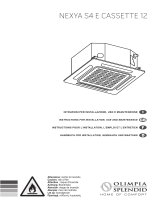 Olimpia Splendid Nexya S4 E Cassette Inverter Multi Guida d'installazione
Olimpia Splendid Nexya S4 E Cassette Inverter Multi Guida d'installazione
-
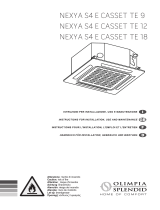 Olimpia Splendid Nexya S4 E Cassette Inverter Multi Guida d'installazione
Olimpia Splendid Nexya S4 E Cassette Inverter Multi Guida d'installazione
-
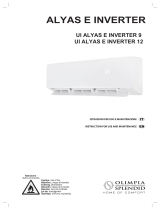 Olimpia Splendid UI ALYAS E INVERTER 12 Manuale del proprietario
Olimpia Splendid UI ALYAS E INVERTER 12 Manuale del proprietario
-
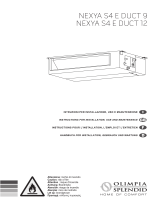 Olimpia Splendid Nexya S4 E Duct Inverter Multi Manuale del proprietario
Olimpia Splendid Nexya S4 E Duct Inverter Multi Manuale del proprietario
-
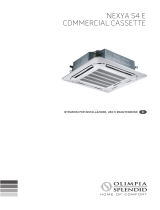 Olimpia Splendid Nexya S4 E Cassette Inverter Commercial Guida d'installazione
Olimpia Splendid Nexya S4 E Cassette Inverter Commercial Guida d'installazione
-
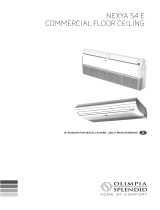 Olimpia Splendid Nexya S4 E Ceiling Inverter Commercial Guida d'installazione
Olimpia Splendid Nexya S4 E Ceiling Inverter Commercial Guida d'installazione
-
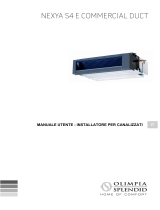 Olimpia Splendid Nexya S4 E Duct Inverter Multi Guida d'installazione
Olimpia Splendid Nexya S4 E Duct Inverter Multi Guida d'installazione
-
Master BP 13 Patio Manuale del proprietario
-
Gorenje S1 Manuale del proprietario
-
NEC ビデオ・エクステンダ 受信器 SB-07BC Manuale del proprietario



























































































































































































